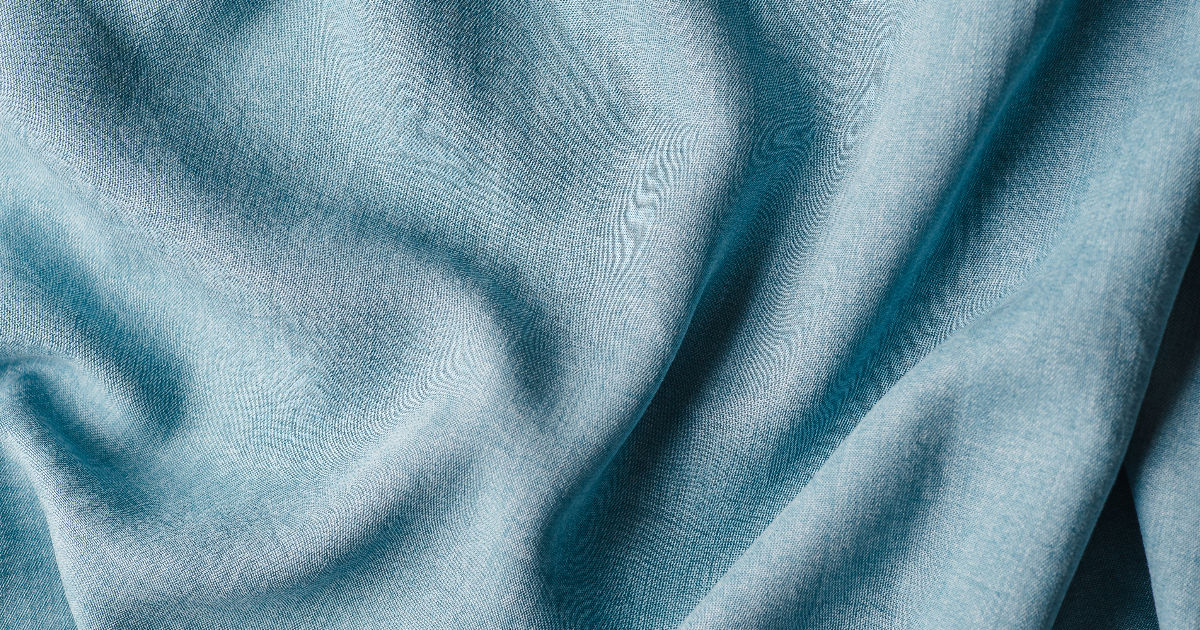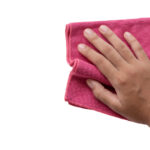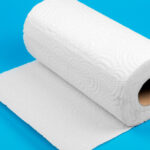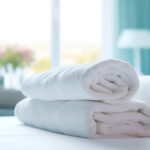As fast fashion and textile waste continue harming the planet, more eco-conscious consumers are seeking out sustainable clothing and home fabrics.

One emerging player in green fabrics is lyocell, a rayon fiber made from wood pulp.
But with so many fabric options now offering environmental benefits, how can we know if Lyocell truly lives up to its sustainable reputation?
What is Lyocell Fabric? A Sustainable Rayon Alternative
Lyocell is a semi-synthetic fiber used to create textiles for clothing, home furnishings, and other purposes. Unlike traditional rayon made using toxic carbon disulfide, lyocell is produced using a more eco-friendly solvent called N-methyl morpholine N-oxide (NMMO). This makes it stand out as a sustainable rayon alternative.
Lyocell was first developed commercially in the early 1990s under the brand name Tencel. Today it goes by various generic and trademarked names, but lyocell has become the most widely used term.
How is Lyocell Fabric Made?
Lyocell production starts with cellulose extracted from wood pulp, most commonly from eucalyptus trees. The pulp is dissolved using NMMO solvent, forming a liquid solution called dope. This is then pushed through spinneret showerheads to form long, continuous strands called filaments.
As the strands come out, they are drawn and aligned to strengthen the lyocell fibers. The fibers are then washed to remove the solvent. After drying and lubricating, they are ready to be spun into yarns and woven or knitted into fabrics.
A key advantage of lyocell production is that the NMMO solvent can be recovered and reused. This closed-loop manufacturing process allows up to 99.5% of the solvent to be recycled, generating far less chemical waste compared to other regenerated cellulosic fibers like rayon or modal.
Lyocell Fabric Characteristics and Uses
Lyocell shares many desirable properties with natural fibers like cotton, linen, and silk:
- Soft and smooth texture – Lyocell has a luxurious silk-like feel, making it suitable for delicate fabrics.
- Absorption and breathability – It rapidly absorbs and releases moisture, keeping wearers dry and comfortable. This makes it ideal for activewear.
- Antibacterial – The breathability creates an unfavorable environment for bacteria growth.
- Strength and durability – Lyocell fibers are stronger than cotton and retain their stretch. This makes the fabrics resistant to wrinkling and abrasion.
- Versatility – Lyocell blends well with cotton, polyester, wool, silk, and other fibers. It can mimic suede, denim, and a variety of textures.
- Sustainability – As a plant-based fiber, lyocell is biodegradable and compostable. The closed-loop manufacturing process also makes it one of the more eco-friendly rayon types.
Thanks to these properties, lyocell is used to create:
- Clothing like jeans, dresses, underwear, and activewear
- Home textiles like bedding, towels, and upholstery
- Specialty papers and medical applications
- Industrial products like conveyor belts
The Pros and Cons of Lyocell Fabric
Lyocell offers sustainability advantages over traditional rayon and even cotton:
Pros:
- Made from renewable and fast-growing trees like eucalyptus
- Closed-loop manufacturing reuses and recycles solvents
- Uses less water, energy, and land than cotton
- Biodegradable and compostable
Cons:
- Still requires chemical processing
- Energy-intensive production
- More expensive than conventional options
- Requires transparency from manufacturers
While lyocell production is much cleaner than traditional rayon, it still has an environmental impact from sourcing wood pulp and using chemical solvents. Consumers should look for lyocell made transparently by eco-conscious companies.
Caring for Lyocell Fabrics
Lyocell is durable but more delicate than synthetic fibers. Follow these care instructions to keep lyocell fabrics looking their best:
- Wash in cold water using a gentle, eco-friendly detergent
- Avoid twisting, wringing, or abrasive scrubbing
- Dry flat or hang to air dry – minimize machine drying
- Iron inside out at a low temperature if needed
- Steam wrinkles rather than ironing at high heat
With proper care, lyocell fabrics will maintain their softness, color, and durability for many years. This makes them a smart investment for consumers looking for sustainable textiles.
Lyocell vs. Other Sustainable Fabrics
How does lyocell compare to other eco-friendly fabric options?
- Lyocell vs. Organic Cotton: Lyocell requires less water and land to produce than organic cotton. It’s also softer and more moisture-wicking. However, organic cotton remains one of the most eco-friendly natural fibers.
- Lyocell vs. Modal: Modal is an earlier generation of rayon, similar to lyocell. However, modal manufacturing is not as sustainable – it recovers only about 70% of solvents. Lyocell’s closed-loop process makes it the greener choice.
- Lyocell vs. Recycled Polyester: Recycled polyester reduces plastic waste but still releases microplastics when washed. As a compostable plant-based fiber, lyocell is better for the environment long-term.
No fabric is perfect. But for clothing and textiles that feel luxurious and tread lighter on the planet, lyocell is a top contender among eco-conscious brands and consumers. With responsible production and care, it offers a sustainable rayon alternative for modern wardrobes.
FAQs
What are the main differences between lyocell, modal, and viscose rayon?
While lyocell, modal, and viscose are all semi-synthetic rayon fibers made from plant cellulose, they differ significantly in manufacturing and sustainability. Viscose rayon uses toxic carbon disulfide and recovers only 20% of solvents. Modal rayon recovers about 70% of solvents in a semi-closed loop system. Lyocell represents the latest evolution in rayon, recovering over 99% of solvents in a closed-loop process that generates minimal byproducts or waste. So lyocell is considered the most eco-friendly and sustainable type of rayon fiber.
Is lyocell antibacterial and odor resistant?
Yes, lyocell’s highly breathable structure makes it naturally antibacterial and odor resistant. The moisture-wicking properties prevent bacterial growth by allowing sweat and humidity to evaporate rather than get trapped in the fabric. This makes lyocell ideal for clothing and bedding, as it stays fresher longer between washes compared to cotton or other less breathable fibers.
Can lyocell replace cotton and polyester fabrics?
Lyocell makes an excellent sustainable alternative to both cotton and polyester fabrics. Compared to cotton, lyocell uses far less water to produce and creates greater yields per acre of land. It also feels luxuriously soft and smooth, whereas cotton can be rough and irritating. And unlike polyester which is plastic-based, lyocell is biodegradable and compostable at the end of life. With proper transparency and production methods, lyocell enables more eco-friendly textile options to replace conventional cotton and polyester.
How durable and long-lasting is lyocell fabric?
Lyocell fibers have exceptional tenacity and strength, both dry and wet. The fabrics resist wrinkles, abrasion, and everyday wear and tear. With proper care as outlined above, lyocell items can maintain their quality, softness, and vibrant colors for many years of use. So despite a higher upfront cost, lyocell makes a smart long-term investment thanks to its durability and longevity.
Conclusion
Lyocell has rapidly gained popularity as a sustainable plant-based fabric that mimics silk and cotton.
With advantages like closed-loop production and biodegradability, it offers clear environmental benefits over traditional rayon and other common textiles.
However, consumers should still scrutinize lyocell sources and processing methods to ensure the sustainability claims ring true.





